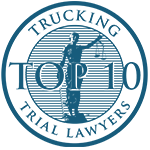CALL (800) 863-5312 TO SPEAK WITH SEAT BELT FAILURE LAWYERS
Seat belts routinely prevent injuries and deaths in car accidents. Seat belt usage is the single most effective way to protect yourself in a crash and, in 2017, seat belts saved approximately 15,000 lives. However, when seat belts fail to work, a vehicle’s occupants can be thrown into the airbag, hit the windshield, or ejected from the vehicle.
The seat belt injury lawyers at Zinda Law Group have experience helping victims seek the compensation they deserve. If you were injured because of a defective seat belt, call us today at (800) 863-5312 for a free attorney consultation.
DEFECTIVE SEAT BELT INJURY LAWYERS
When a seat belt fails to work in a car accident, you may be left with significant injuries and expenses. Hospital bills, doctor’s visits, chiropractor appointments, physical therapy, missed work, and repairing or replacing your vehicle can be a huge financial burden. However, you shouldn’t have to pay for an accident that’s not your fault.
Our defective seat belt injury lawyers may help investigate the car crash and determine if a defective seat belt played a role in your injuries. This may include examining evidence from police reports, photographs, witness statements, medical records, and complaints against your vehicle’s manufacturer.
Read More: I Was Not Wearing My Seat Belt
DEFECTIVE SEAT BELT INJURIES
Unfortunately, many injuries that are the result of a defective seat belt could have been significantly lessened or avoided if the seat belt correctly functioned during the crash. A seat belt is designed to be worn with the lap belt and shoulder belt across the pelvis and rib cage because they are better able to withstand the force generated in a crash than other parts of your body. When your seat belt fails to work in an accident, you may suffer from serious injuries including:
- Head and brain injuries
- Chest injuries
- Abdomen injuries
- Spine or pelvis injuries
- Broken legs and arms
- Whiplash
- Internal bleeding
- Pinched nerves
- Stomach pain
TYPES OF SEAT BELT DEFECTS
The Federal Motor Vehicle Safety Standards lay out several requirements for seat belt assemblies that manufacturers must follow. However, despite these requirements, seat belt defects can still occur. Some of the most common reasons include:
Buckle or Latch Failure
When a seat belt is falsely latched, the plate may look, feel, and sound like the buckle was latched. In reality, a seat belt wearer can insert the entire buckle into the latch but miss the locking mechanism. When the latch fails, the seat belt will not be correctly fastened, making the seat belt effectively useless.
Webbing
The webbing of a seat belt is made out of material intended to withstand the force generated in an accident. However, if the material is defective or a sharp object comes into contact with the seat belt during the accident, the seat belt may not withstand the force of the collision.
Retractor Failure
In a typical seat belt system, the seat belt webbing is connected to a retractor, which should quickly tighten the seat belt to hold you in place during a car accident. When the seat belt fails to tighten or lock into place, the seat belt wearer is more likely to be injured.
Spooling
Similar to a retractor failure, spooling occurs when the retractor fails to wind up the loose webbing. If too much of a seat belt’s webbing is unraveled, the seat belt may not be tight enough to keep the wearer in place in an accident.
Anchors
A seat belt’s anchor is the part bolted and attached to the vehicle. If an anchor is incorrectly assembled or installed, it may not hold the seat belt in place.
SEAT BELT FAILURE STATISTICS
The NHTSA does not publish data on seat belt failure statistics, so it is unknown just how frequently seat belt failures occur. However, it is known that seat belt defects still occur, as several automakers have recalled vehicles over defective seat belts in the past few years.
In 2019, Ford recalled 108,000 midsized vehicles over seat belt defects that could prevent holding passengers in place during a collision. In June 2019, Land Rover recalled 16,000 vehicles due to faulty driver’s side seat belts. In 2014, GM recalled 1.4 million pickup trucks after it was discovered that the steel cables connecting the seatbelt to the car could wear down and separate from the vehicle over time.
These are just a few of the many seat belt recalls that have occurred within the last few years. It is important that if your vehicle’s seat belts are recalled, you get them fixed or replaced as soon as possible.
WHO IS LIABLE FOR SEAT BELT DEFECTS?
Several parties may be liable for seat belt defects. A design flaw, lack of warning labels, manufacturing error, or failure to test seat belts can all contribute to a defective seat belt. It is important to determine where in the process the seat belt defect occurred to resolve which party is liable. Some of the potential parties that could be liable for a seat belt defect include:
Designer
A design flaw could increase the chances of being injured in a car accident. When a designer places the seat belt in a position that will cause the seat buckle to unlatch in a crash, the design may be considered defective.
Product Manufacturer
When a seatbelt is poorly manufactured it may become unlatched, unattached, and fail to work during an accident. If the product is not tested for safety, a manufacturing error that could have been corrected may be unaddressed. For example, in October 2020, Japanese regulators announced that Takata may have produced defective seat belt webbing. This defect is especially troubling as Takata produces seat belt webbing for about 30% of vehicles worldwide.
Automaker
Automakers routinely recall cars based on defective seatbelts. Unfortunately, automakers sometimes realize that their vehicles have defective seat belts after individuals have already suffered from serious accidents. Some of the cars recalled within the last year include:
- Fiat Chrysler: In October 2020, Fiat Chrysler recalled 2,100 Jeep Gladiators and Ram Pickups because it was discovered that the front seat belt retractors may not lock as intended during a crash, increasing the risk of injury.
- Volvo: In June 2020, Volvo recalled more than 2 million cars worldwide for a defect in the front seatbelts. The company found out that the steel cable that anchors the seat belts to the car could weaken over time, reducing the seat belts’ ability to restrain occupants in a crash.
- Toyota: In January 2020, Toyota recalled 2.9 million vehicles over airbags and seat belt concerns. In the cars recalled, the electrical control unit from a supplier designed to receive signals from crash sensors and deploy the airbags and seat belt pretensioners did not function correctly, increasing the risk and severity of injuries in a crash.
THE IMPORTANCE OF EVIDENCE
In a defective product case, evidence that the seat belt did not function correctly during a car accident will be central in determining liability. Many times, technical experts will need to be hired to review the seat belt for design or manufacturing errors. For this reason, it is important that a police report is filed with details of the crash. Additionally, you should document the internal and external damage to your car and take photos of any injuries you sustained in the crash.
Although an expert will likely be needed to review the evidence, some of the most common signs of a potential seat belt defect are:
- An occupant wearing a seat belt hits the windshield
- Serious injuries are sustained to a belted passenger in a minor collision
- The occupant is ejected outside the vehicle or outside the restraint of the seat belt, but the seat belt buckle is still latched
- The seat belt webbing is torn or ripped
- An injured occupant is discovered wearing a loose-fitting seat belt
- An occupant is found un-belted but insists they were secured in a seat belt
- Both occupants were wearing seat belts, but one passenger sustains significantly more serious injuries than the other
- The seat belt mounts came loose from the floor or vehicle pillars during the accident
CONTACT OUR SEAT BELT INJURY LAWYERS TODAY
At Zinda Law Group, our personal injury attorneys have helped many car accident victims who suffered from injuries due to defective products. We fight for our clients’ right to compensation for hospital bills, car damage, pain and suffering, and much more.
We believe a car accident victim should never have to worry about being able to afford legal representation. That is why we offer 100% free consultations, and why you pay nothing unless we win your case. That’s our No Win, No Fee Guarantee.
If you have been injured in a car accident because of a defective seat belt, call us today at (800) 863-5312 to receive your free consultation with one of our experienced seat belt failure lawyers.
Meetings with attorneys by appointment only.


























